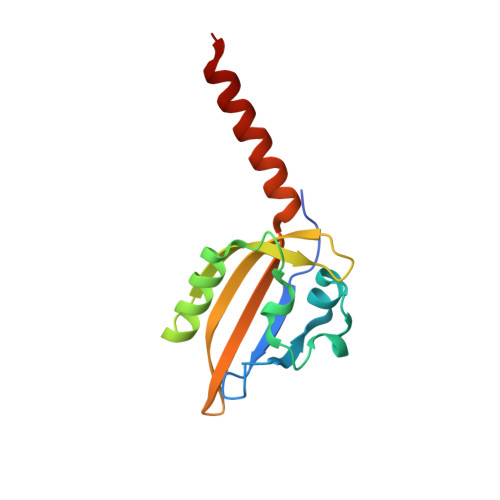Structural Basis for Light-dependent Signaling in the Dimeric LOV Domain of the Photosensor YtvA.
Moglich, A., Moffat, K.(2007) J Mol Biology 373: 112-126
- PubMed: 17764689
- DOI: https://doi.org/10.1016/j.jmb.2007.07.039
- Primary Citation of Related Structures:
2PR5, 2PR6 - PubMed Abstract:
The photosensor YtvA binds flavin mononucleotide and regulates the general stress reaction in Bacillus subtilis in response to blue light illumination. It belongs to the family of light-oxygen-voltage (LOV) proteins that were first described in plant phototropins and form a subgroup of the Per-Arnt-Sim (PAS) superfamily. Here, we report the three-dimensional structure of the LOV domain of YtvA in its dark and light states. The protein assumes the global fold common to all PAS domains and dimerizes via a hydrophobic interface. Directly C-terminal to the core of the LOV domain, an alpha-helix extends into the solvent. Light absorption causes formation of a covalent bond between a conserved cysteine residue and atom C(4a) of the FMN ring, which triggers rearrangements throughout the LOV domain. Concomitantly, in the dark and light structures, the two subunits of the dimeric protein rotate relative to each other by 5 degrees . This small quaternary structural change is presumably a component of the mechanism by which the activity of YtvA is regulated in response to light. In terms of both structure and signaling mechanism, YtvA differs from plant phototropins and more closely resembles prokaryotic heme-binding PAS domains.
- Department of Biochemistry and Molecular Biology, Institute for Biophysical Dynamics, University of Chicago, 929 East 57th Street, Chicago, IL 60637, USA.
Organizational Affiliation:

















